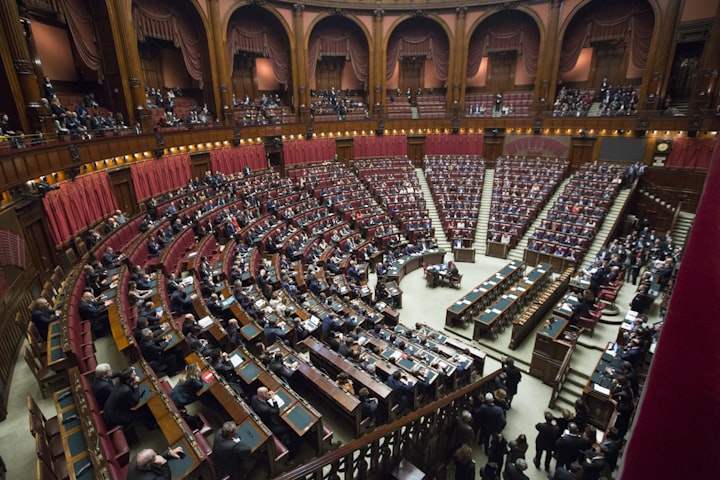
George S. Devol, 99, a self-taught architect who developed a robotic arm that revolutionized factories around the world, died on August 11 at his home in Wilton, Connecticut. George Charles Devol often referred to as the father of robots, invented the first industrial robot, Unimate, in 1954. A few years later, Devol and businessman Joseph F. Engelberger discussed interest in the sector and their company. ... Mr. Devol coined the concept that Universal Automation - later abbreviated as Unimation - and acquired a patent in 1961.
In 1961, the first Unimate industrial robot, built by American inventor George Devol, operated on the General Motors assembly line at the Inland Fisher Guide factory in Ewing, New Jersey. In 1961, the first Unimate industrial robot, built by American inventor George Devol, operated on the General Motors assembly line at the Inland Fisher Guide factory in Ewing, New Jersey.
The first Unimate robot was fitted to the GM Inland Fisher Guide factory in Ewing, New Jersey, in 1961 so that pieces of hot metal could be lifted from the injection molding machine and packed. The first Unimate prototype was developed in 1961 and incorporated into GM injection molding and staining. In 1961, the Unimate # 001 prototype was sold to General Motors and launched at its car dealership in New Jersey. Later, in 1969, the newly renovated GM factory in Lordstown, Ohio, reported that its Unimate 1900 vacuum cleaners were producing 110 vehicles per hour.
GM led to the development of Unimation electric robots that were not yet owned. However, Unimation had a few fans, all of whom were eager to find a place in the robots.
This partnership eventually reached a licensing agreement with Kawasaki Heavy Industries in 1969 to make and sell Unimate robots in the Asian market - a successful marriage that lasted and prospered for 15 years. By 1983, they had shipped more than 2,400 robots to Kawasaki Unimate in Japan. In 1960, Devol personally sold the first Unimate robot, which was shipped from Danbury, Connecticut to General Motors in 1961.
Mr. Devol sold his first robot arm at the General Motors factory in Trenton, New Jersey in 1961 when it was designed to process hot metal for injection molding. Thus, the development of industrial robots continued to develop rapidly, and in 1969 the Stanford arm eventually led to the production of commercial weapons.
Stanford Hand is one of the first electronic and computer-controlled hands. In 1969, mechanical engineer Viktor Sheinman created the Stanford robotic arm, known as the first arm of a computer-controlled electric robot. The first independent electronic robot with complex behavior was created in 1948 and 1949 by William Greywalt of the Burden Institute of Neurology in Bristol, England. The first digital and orderly robot was invented by George Dvor in 1954 and was named Unimate.
The advent of computerized computer control (CNC) machines, the popularity of computers (the 1950s) and integrated circuits (1970s) helped initiate the development of robots in early but simpler industries. With the advancement of the computer industry, the combination of computer technology and robots has created artificial intelligence; robots can read. An author and anthropologist imagine a world of robots in everyday life. Science fiction writer and futurist Isaac Asimov first used the term "robots" to describe robots in 1941 and predicted the development of a powerful robotic industry.
The success story of the first company to develop robots on demand was created in 1967. In 1928, one of the first humanoid robots was on display at the annual Society of Model Engineers exhibition in London. The humanoid Maschinenmensch ("human-machine") is the first robot to appear in a movie.
The Devil's patent for the first robust CNC robotic arm has become the foundation of the modern robotic industry. The Devil's patent for the first CNC robotic arm is the basis of today's robotic industry. In 2005, Popular Mechanics listed the robot arm and the airplane and TV remote controls as one of the 50 biggest inventions of the last 50 years.
If Joseph Engelberger was the father of robots, George Devol was the grandfather. Devol, along with business partner Joseph Engelberger, founded the world's first robotic robot, Unimation. Joe soon convinced Codecs CEO Norman Schaffler to support the idea of Devils, an industrial robot.
Engelberg's new invention was a key factor in the growth of the Japanese automotive industry. In the postwar period, the use of robots was welcomed with open arms. Engelberger first focused on the robotic industry, and later studied the use of robots in the human services industry, founded HelpMate Robotics, Inc., and served as president of the company. Engelberger is the founder and president of Unimation, Inc., the world's first manufacturer of industrial robots. He founded the company in 1956 and developed into a company with more than 1,000 employees before the company was acquired by Westinghouse Electric. He later founded and served as President of Consolidated Controls Corporation and Unimation, Inc.
The production engineer was instructed to “do something” with the specifications, but passed them on to potential providers: FoMoCo did not have the idea of seeing the robots' ability to assemble the body much later. This has encouraged further research and technological advancement, and features such as microprocessor design have helped to create cost-effective control systems. Engelberg Industrial Applications has transformed the automotive industry with the introduction of robots, enabling car manufacturers to achieve greater efficiency and accuracy with robotic arms in assembly lines. However, until the late 1960s, the robot was used to detect the bodies of hot cars, no other industry encouraged the proliferation of industrial robots like injection molding.
Unimate is based on Devols' 1954 systematic patent transfer, which introduces the concept of "General Automation" or Unimation. It was founded by George Devol in the 1950s using his original patent (US Patent 2,988,237) which was filed in 1954 and issued in 1961. the latest versions used transistors We have upgraded Scheinman's robot into a world-class compact (PUMA) machine.
Mr. Engelberg listened with interest and quickly understood the importance of the new technology. In 1966, Engelberger and his robot Unimate appeared in "The Tonight Show" with director Johnny Carson. A robot introduced by flooded golf clubs pours beer and conducts its own orchestra.
However, while Unimate is undoubtedly one of the most important technological advances in civilization, its legacy includes some of the major challenges faced by the use of robots in industrial environments. The robots of the past were large and heavy - the Unimate # 001 prototype weighed 2,700 pounds - and was limited in its design and the limited rules used to control them. In 1999, Sony introduced the AIBO, a robotic dog that can communicate with humans; The first models released in Japan were sold within 20 minutes.





Comments
There are no comments for this story
Be the first to respond and start the conversation.